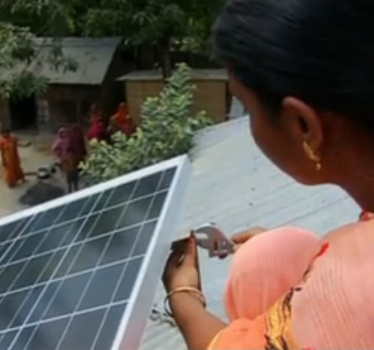You have probably heard about or read Blue Ocean Strategy by W. Chan Kim and Renée Mauborgne. It has been translated into 42 languages and sold over 2 million copies – so it fair to say it has made quite a splash. The authors came in a second spot on the Thinkers 50 for 2011. Their ocean metaphor is compelling – most businesses form strategy to compete in the red ocean. There is intense competition and there’s blood in the water. The smart ones migrate to new market spaces – the blue ocean.
It is exciting to look at this book through the lens of sustainability. A central concept is value innovation. A part of the process is driving down costs and increasing customer benefits, creating a new market space. The sustainability connection is the social good created.
The four billion people who make less than $2.00 a day are excluded from the market place. By driving down costs the poor can participate a little more in the market place and, more importantly, raise standards of living for their families.
There are some great examples coming out of the developing world – examples of innovation that we can learn from. Grameen Shakti, one of the family of Grameen companies, provides renewable power technologies to the rural poor in Bangladesh. To enable the poor to purchase biogas digesters or solar panels has required a suite of innovations creating an exemplary example of a blue ocean strategy. The panels are assembled and installed by women given appropriate technical training, also creating employment opportunities. The solar panels provide light at night, and improved fuel-efficient cooking stoves create a healthier home environment. Children are able to study in the evenings and the healthier air eliminates some health issues.
This image of a woman in a sari installing a solar panel on a Bangladeshi roof represents sea-change in the lives of rural Bangladeshi women. Opportunities for technical training and benefits generated by the new technologies transform lives. See more about Grameen Shakti in this YouTube video.
A “first world” example is the innovations created by Better Place through their radical business model for electric vehicles (EVs). Shai Aggasi has developed the concept of the “battery swap” enabling EV drivers to call into switching stations and quickly swap a battery. A core innovation is separating the cost of the battery from the cost of the car. He anticipates that economies of scale will reduce the cost of travel down to 2 cents per mile.
Shai Aggasi has integrated the value innovation concept into his business model. He recognises that mass adoption of new technologies depends on creating products and services that are cheaper than existing options. Your can learn more about his thinking at this TED talk.
This is the crux of the matter. Those introducing innovations into red ocean markets are either increasing buyer value or reducing price. Blue ocean innovators such as Muhammad Yunus and Shai Aggasi are doing both.
Unfortunately the companies that are selling EVs through conventional business models are relying on the red ocean strategy of increasing buyer value, but at significantly higher prices compared to comparable vehicle. I realise that they will want to recoup their investments, and that batteries are expensive. On the other hand electric motors and transmissions are simpler than internal combustion equivalents.
To reap the sustainability harvest, perhaps we will have to wait for developing world entrepreneurs such as Rajan Tata to deliver a blue ocean EV.



